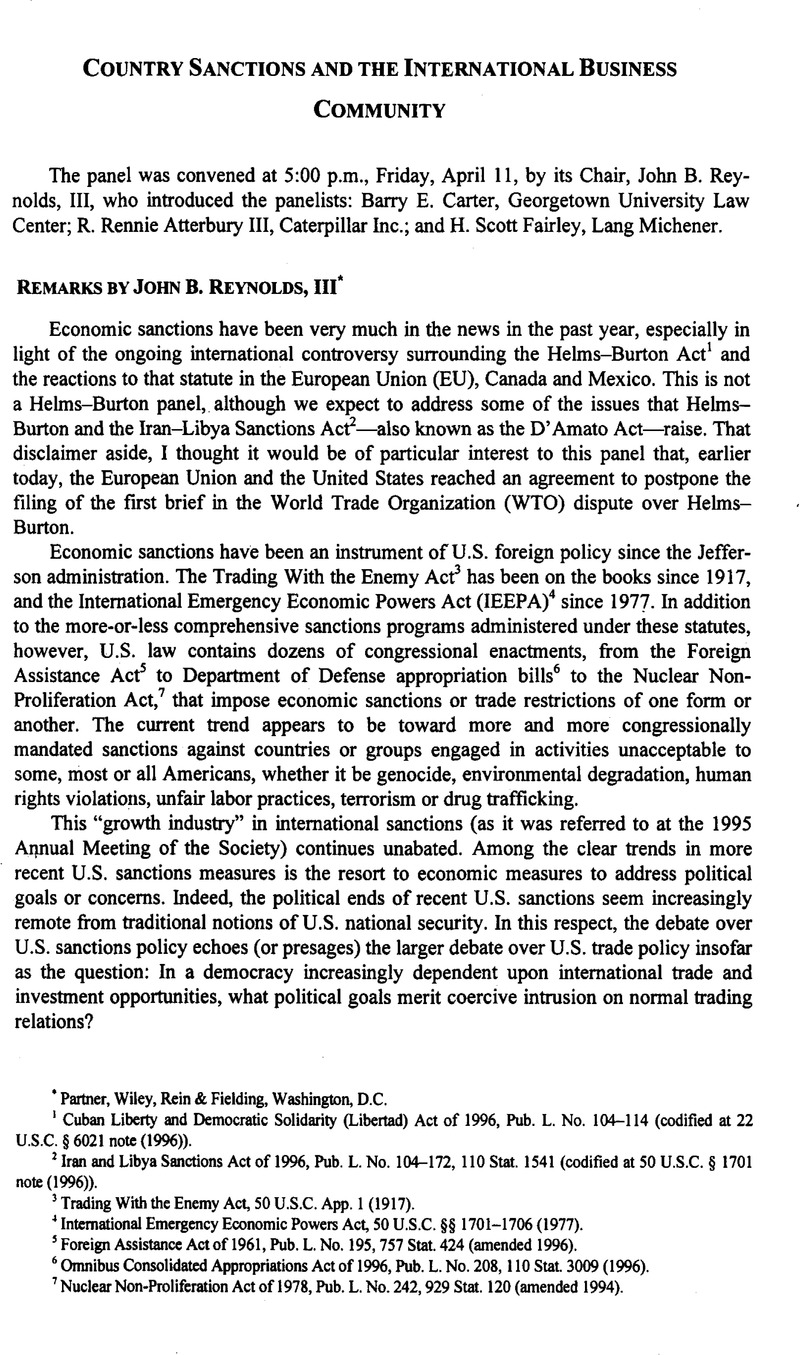Article contents
meeting-report
Published online by Cambridge University Press: 28 February 2017
Abstract

- Type
- Country Sanctions and the International Business Community
- Information
- Copyright
- Copyright © American Society of International Law 1997
References
1 See generally Barry Carter, International Economic Sanctions: Improving the Haphazard U.S. Legal Regime (1988); Gary C. Hufbauer Et Al., Economic Sanctions Reconsidered: History and Current Policy (2d ed. 1990).
2 “International financial institutions” is usually meant to include the World Bank Group, the International Monetary Fund (IMF), and the regional development banks (such as the Inter-American Development Bank). Sometimes, the law (e.g., on inadequate anti-narcotics efforts) talks of votes in the multilateral development banks (MDBs), which is the same group of institutions except that it does not include the IMF.
3 See National Association of Manufacturers, A Catalog of New U.S. Unilateral Economic Sanctions for Foreign Policy Purposes, 1993-96 (1997) (with analysis and recommendations).
4 Id. at v; see also id. at 12.
- 2
- Cited by


